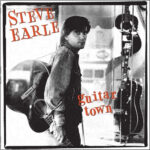From the moment electric guitars emerged, musicians have been obsessed with pushing the boundaries of their amplifiers, seeking that raw, overdriven sound. Blues pioneers were among the first to explore amplifier signal overdrive, but it was the explosion of rock and roll that truly cemented distortion as a cornerstone of guitar music. Innovations in amplifier and pickup design made achieving distorted tones more accessible, and soon, artists like Link Wray were forging their signature sounds with distortion. The mid-1960s witnessed the rise of fuzz pedals, embraced by garage rock bands worldwide, while icons such as Dave Davies and Pete Townshend integrated distortion and overdrive into their iconic styles. Today, Guitar Effects Pedals Distortion are incredibly diverse and widely available, offering a spectrum of sonic possibilities.
If you’re new to the world of guitar effects pedals distortion and overdrive, understanding the nuances can be helpful. While both are often categorized as “gain pedals” and serve to overdrive your signal, they achieve this in distinct ways, resulting in different tonal characteristics. Distortion pedals are generally known for producing a more aggressive, gritty sound, often with increased sustain. Think of the quintessential tones of genres like grunge and death metal – these are the realms of distortion. Distortion pedals often clip the audio signal more heavily, creating a harder, more compressed sound.
Overdrive pedals, on the other hand, are designed to mimic the warm, crunchy sound of a tube amplifier pushed to its limits. They aim to replicate the natural saturation and harmonic richness of an overdriven tube amp. This results in a tone that is typically smoother and warmer than distortion, making it ideal for genres like blues and classic rock, where a dynamic and responsive breakup is desired. Overdrive tends to be less compressed than distortion, allowing more of the guitar’s original dynamics to shine through.
Choosing between a distortion or overdrive pedal ultimately boils down to personal preference and the specific sound you’re aiming for. For guitarists seeking a versatile overdrive, the Fulltone OCD (Obsessive Compulsive Drive) Overdrive Guitar Effects Pedal is a popular choice. Its compact design belies its wide range, capable of delivering everything from subtle boost to raw, vintage-flavored overdrive. Conversely, for those in pursuit of classic distortion, the Electro-Harmonix Big Muff Pi Distortion/Sustainer Guitar Effects Pedal remains a legendary option. This reissue of the iconic Big Muff Pi offers three controls to sculpt a vast landscape of harmonic distortion and sustain, ranging from deep bass to crisp treble, making it a powerhouse for hard rock and beyond.
Exploring further, the market offers a wealth of overdrive options such as the industry-standard Ibanez Tube Screamer and the versatile Boss Super OverDrive SD-1. For distortion aficionados, pedals like the TC Electronic Dark Matter Distortion Pedal and the MXR M75 Super Badass Distortion Pedal provide a wide array of distorted tones to explore. Whether you’re chasing the heavy snarl reminiscent of Black Sabbath, the buzzsaw attack of Johnny Ramone, or the feedback-drenched chaos of Kurt Cobain, the perfect guitar effects pedals distortion to sculpt your ideal tone awaits discovery.

